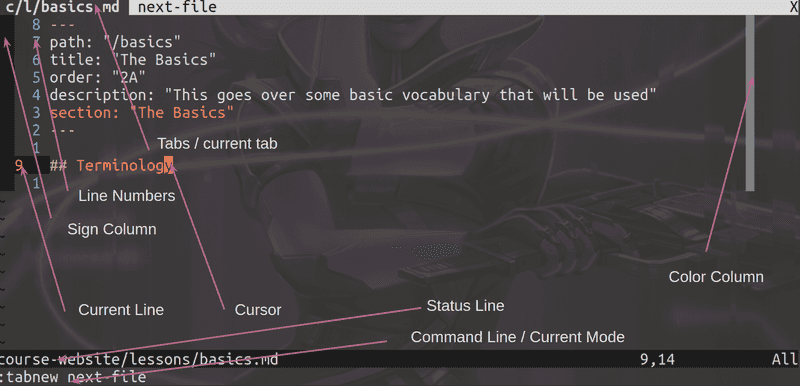The Terminology
Files, Buffers, Windows, Splits, and Tabs
We all know what files are (or so you think LiveOverflow's Video on Files) but there is a bit more when it comes to how vim handles them.
Buffer
A buffer contains the text of the file and is what you edit.
:h buffer
Window
Contains a buffer to display. Windows can be closed but the underlying buffer can remain in memory.
:h window
Tabs
A tab is like another viewport. You can have many windows|splits open per tab.
:h tab
Splits
A split simply refers to splitting the viewport in N sections (various sizing and orientations available) to display windows.
:h split
Other Terminology
Help Menu
Help menu can be accessed by typing :h<enter>. There is so much
documentation, that is pretty good, available. If you find yourself lost,
RTFM (at least that is what they tell me).
Motion
A command that moves the cursor (taken straight from the help docs, :h motion).
Abbreviations
Ctrl+a will be abbreviated <C-a>. This is also how its referenced in VimL,
Vim's editor language.
Enter will often be abbr as <CR>
Tab, Escape, and space will be <tab>, <esc>, <space>
When you see something that starts with a : that means it will execute a command.
